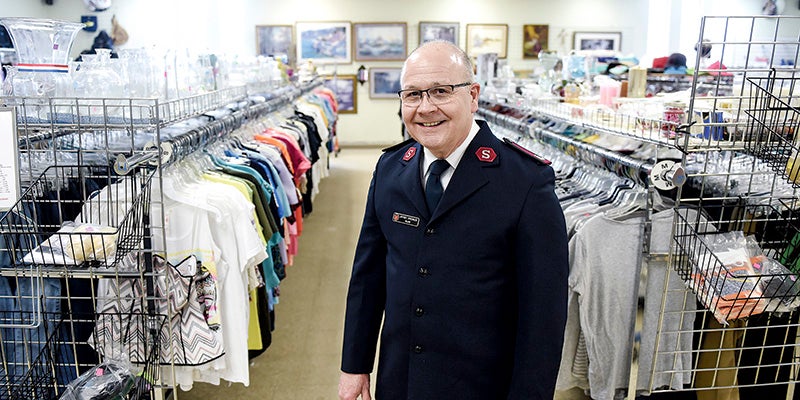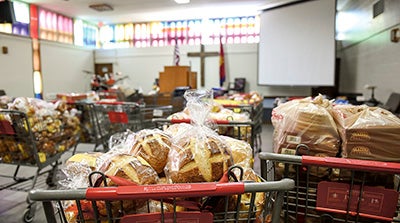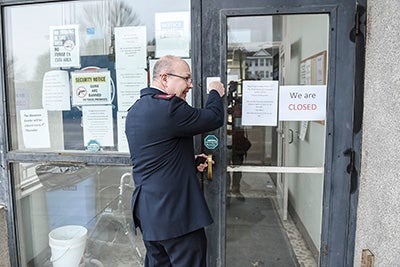Pushing Forward: Salvation Army here to help, starting to feel the pinch
Published 7:01 am Thursday, April 2, 2020

- Major Jeff Strickler stands in the thrift store of the Salvation Army, which they’ve had to close because of the COVID-19 pandemic. The closure cuts into the money raised by the SA that goes to providing services for the people it helps. Photos by Eric Johnson/photodesk@austindailyherald.com
|
Getting your Trinity Audio player ready...
|
The sweeping effects of the COVID-19 outbreak have been felt around the globe, but even as people seek help during this time, many organizations designed to give that assistance are feeling strains of their own.
Like most places, the Austin Salvation Army has taken steps to limit risks to their customers as well as their employees, which includes closing down the Thrift Store. The store is the Salvation Army’s major source of revenue.

Donated food items are assembled in the Salvation Army Wednesday afternoon.
“The biggest challenge here for us is our income pieces,” Major Jeff Strickler said. “We had to close our store temporarily. Hopefully we’ll only be closed for a couple months.”
The loss of revenue is big, accounting for around $114,000 in a normal year, but for the time the store will be closed it will put earnings a little closer to just $8,500 a month.
Another challenge has been from donations, which have seen a drop in recent weeks.
“Donations have been coming in very slow,” Strickler confirmed.
In the short term, Strickler said the SA has been able to meet its obligations, including its food shelf and lunches for students and meals at night. In fact, Strickler said the night time meals have seen a growth where the use of the food shelf has gone down.
“We’ve seen a little drop with food shelf numbers,” Strickler said. “We’re not sure if people are staying in or they’re afraid to come in. But at the same time our meals have gone up. We’re now serving in the low 60s when before we served 31 in mid-March.”

The Salvation Army’s Major Jeff Strickler opens the thrift store as he goes in to check the store Wednesday. Eric Johnson/photodesk@austindailyherald.com
Where the real concern comes in is from possible future complications in terms of assistance.
“Our biggest concern is long term and wondering what this is going to mean with people needing help with rent and medication,” Strickler said. “We’re wondering after that (stay at home) order ends, how are people going to fare.”
Another area the SA is feeling pinched is in terms of tending to spiritual needs within the community. Like other religious institutions, the SA is finding ways to meet with people, including praying with people over the phone, but nevertheless the challenge remains.
“It is a little bit harder,” Strickler said. “People aren’t coming into our building and spending as much time. We’ll certainly pray with people by phone and there’s an online service through our headquarters. We are also sending out different things for youth in our youth programs.”
Ultimately, even as Strickler speculates about the future and what it will mean for the SA, most of this lies in the unknown.
It’s hard to plan for things if you don’t know how long the coronavirus will even last.
“That makes it a little bit tough,” Strickler said. “It’s tricky to estimate what the areas of need will be so you can submit grant applications. We’re estimating where the needs are going to be.”
Right now, the SA is still open 9 to 4 p.m. Monday through Thursday, with the evening meal held 5-6 p.m. The doors will be locked, but somebody can arrange to meet you at the door. People are urged to call ahead. The SA is also taking requests from the food shelf, will bag the items and have items waiting for people when they arrive.
The meals are take-out only.
Regardless of what the future holds, Strickler said that the SA is still there for people in need.
“We’re still in a good place to help people,” he said. “We want to make sure we can help people.”





